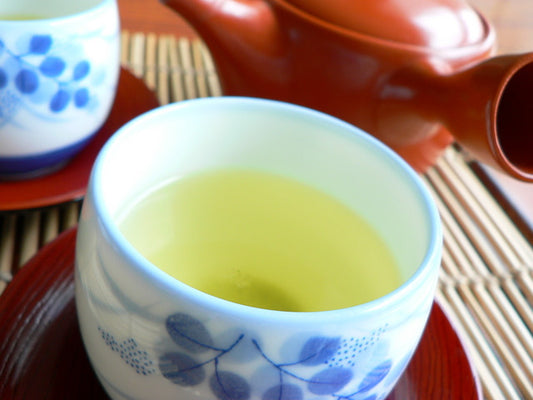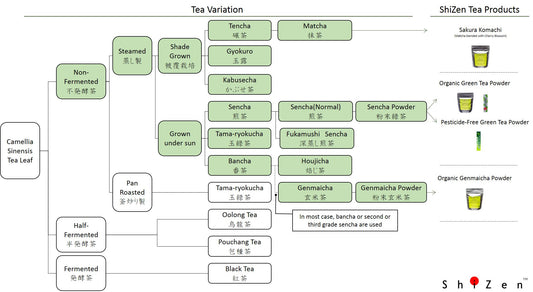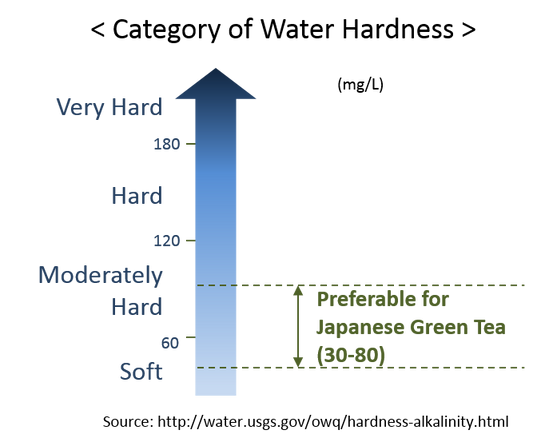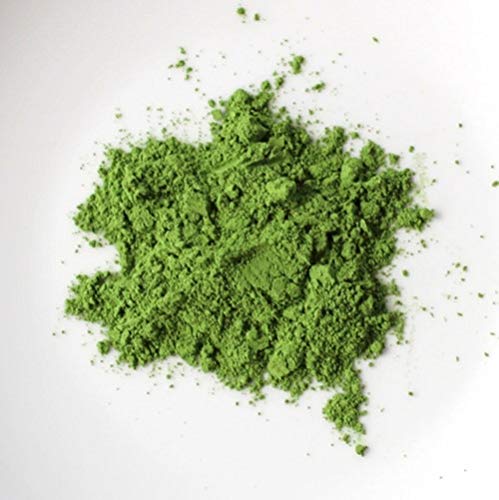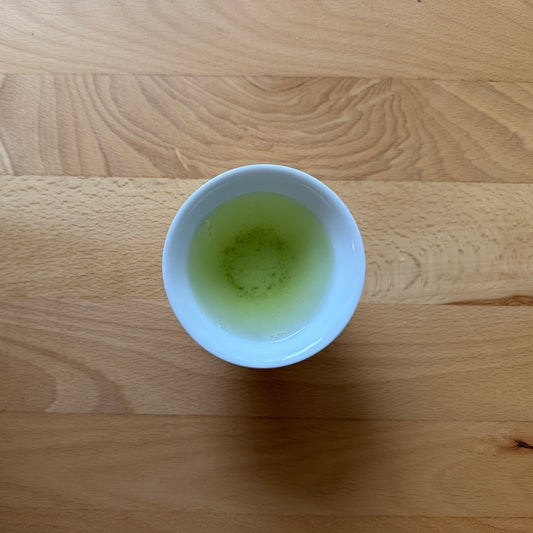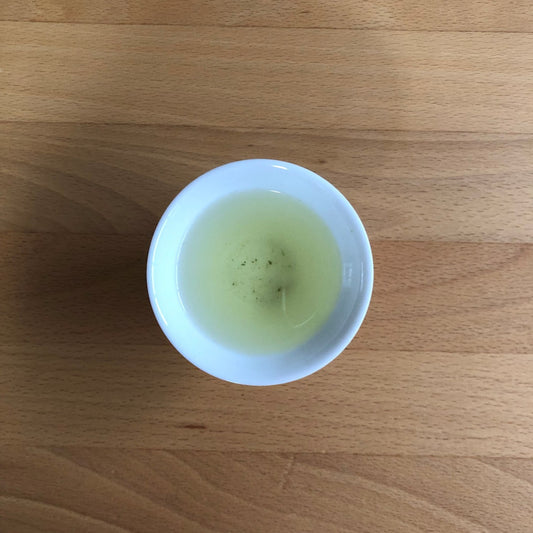The Current State of Japanese Tea – An Overview of Production and Regional Characteristics
The landscape of Japanese tea is in a constant state of evolution and deepening complexity. This document provides an overview of domestic production trends and the distinct characteristics of tea cultivated in various regions, based on the latest available information from the Japanese government stats and adding our knowledge that we earned from the actual tea fields.
ーーーーーーーーーーーーーーー
Overview
I. Domestic Production Status
- Crude Tea (Aracha) Production Volume by Prefecture (Ranking table and overview of each prefecture)
- Production Volume by Tea Type (Production volume and characteristics of Sencha, Kabusecha, Tencha, Gyokuro, Bancha and Other Green Teas, Black Tea, and Other Teas)
II. Characteristics of Major Production Areas
- Shizuoka Prefecture – A Tea Region of Diversity and Innovation
- Kagoshima Prefecture – Advancing Tea Gardens of the South
- Kyoto Prefecture – Uji Tea: Tradition and Prestige
- Fukuoka Prefecture – The Artistry of Yame Gyokuro
- Saitama Prefecture – Musashi Tea, Alive in "Sayama Firing"
III. Other Noteworthy Production Areas (Brief characteristics of Mie, Miyazaki, Saga, Nara, Gifu, Nagasaki, Kumamoto, and Oita prefectures)
ーーーーーーーーーーーーーーーーー
I. Domestic Production Status
1. Crude Tea (Aracha) Production Volume by Prefecture
Crude Tea (Aracha in Japanese) is the raw material that tea farmers or primary producers often sell to tea merchants, wholesalers, or specialized finishing companies, who then meticulously refine it into the final product. Recent crude tea production in Japan is characterized by a concentration in specific regions, alongside the presence of smaller production areas cultivating distinctive teas. The primary production prefectures and their approximate volumes are as follows. (Based on recent data from sources such as the Ministry of Agriculture, Forestry and Fisheries' "Crop Statistics Survey" and the National Federation of Tea Producers' Associations.)

|
Rank |
Prefecture |
Production Volume (tons) |
Key Characteristics |
|
1 |
Shizuoka |
Approx. 25,000 - 27,000 |
Japan's largest tea-producing region. Diverse tea types and processing methods. Deep-steamed sencha is predominant. |
|
2 |
Kagoshima |
Approx. 25,000 - 26,000 |
Production has increased in recent years. Early harvests leveraging a warm climate. Diverse cultivars. |
|
3 |
Mie |
Approx. 5,000 - 5,200 |
One of the nation's leading producers of kabusecha. Deep, rich flavor. |
|
4 |
Miyazaki |
Approx. 2,900 - 3,000 |
Tradition of pan-fired tea. Sencha and organic cultivation also active in recent years. |
|
5 |
Kyoto |
Approx. 2,600 - 2,700 |
Tradition of Uji tea. Renowned for high-grade matcha and gyokuro. |
|
6 |
Fukuoka |
Approx. 1,700 - 1,800 |
Yame tea. Gyokuro quality is particularly highly esteemed. |
|
7 |
Nara |
Approx. 600 - 700 |
Yamato tea. Cultivated in mountainous areas. Bancha varieties also produced. |
|
8 |
Saitama |
Approx. 500 - 600 |
Sayama tea. Distinctive aroma from "Sayama hi-ire" (Sayama firing). |
|
9 |
Gifu |
Approx. 400 - 500 |
Mino Shirakawa tea, Ibi tea, etc. Clear, refreshing aroma characteristic of mountain areas. |
|
10 |
Saga |
Approx. 400 - 500 |
Ureshino tea. Known as a production area for tamaryokucha (curled tea). |
Note: Production volumes may vary by year. The figures above are approximate.
2. Production Volume by Tea Type
A wide variety of teas are produced domestically. The production status of the main types is as follows. (Based on data from sources including the National Federation of Tea Producers' Associations, reflecting the situation in recent years. This breakdown pertains to a total production volume of approximately 74,800 tons.)

-
Sencha: Approximately 38,419 tons. The most produced tea type, accounting for about 51% of the total. Characterized by a refreshing aroma and moderate astringency. Shizuoka and Kagoshima are the two major production prefectures.
-
Kabusecha (Shaded Green Tea): Approximately 4,176 tons. Tea shaded before harvest to enhance umami. Mie Prefecture boasts the nation's top production volume, followed by Fukuoka, Kyoto, and Shiga prefectures.
-
Tencha (Raw Material for Matcha): Approximately 2,095 tons. Grown under shade, steamed, and dried without rolling. Major production areas include Kagoshima, Kyoto, Aichi, and Shizuoka prefectures. Production has been increasing with rising demand in recent years.
-
Gyokuro (Premium Shaded Green Tea): Approximately 580 tons. A high-grade tea shaded for about 20 days before harvest. Characterized by a distinctive umami and "ooika" (shaded aroma). Fukuoka (Yame), Kyoto (Uji), and Shizuoka (Asahina, Okabe) are considered the three major production areas, though its production accounts for less than 1% of total crude tea.
-
Bancha and Other Green Teas: Bancha (approx. 215 tons) and other green teas, including tamaryokucha and kamairicha (approx. 4,580 tons), are produced. These are teas for daily consumption, with diverse production methods and names depending on the region.
-
Black Tea: Approximately 287 tons. Domestically produced black tea is also made in various regions. Areas such as Shizuoka, Kagoshima, Okinawa, and Ibaraki prefectures produce distinctive black teas, though production volume is small compared to green tea.
-
Other Teas: Approximately 65 tons. Teas not classified above are also produced in small quantities. Note: Figures may vary by year. The above are approximate figures based on recent data.
II. Characteristics of Major Production Areas
1. Shizuoka Prefecture – A Tea Region of Diversity and Innovation
Shizuoka leads Japan in tea production volume. Its strengths lie in its vast tea plantations, diverse climate and geography, and technical expertise backed by a long history. Deep-steamed sencha, primarily from the Makinohara plateau, is widely appreciated for its rich color and mellow taste. In contrast, the mountainous areas along the Abe and Warashina rivers yield Honyama tea, characterized by a light steaming and a clear, refreshing aroma. The tradition of gyokuro also continues in the Asahina and Okabe districts.
Shizuoka is where the primary cultivar, 'Yabukita', was selected, and the prefecture actively pursues the development of new cultivars and innovations in cultivation techniques. In recent years, efforts have focused on organic cultivation and exports. It is a region of profound depth, exploring all possibilities of Japanese tea.
2. Kagoshima Prefecture – Advancing Tea Gardens of the South
Leveraging its warm climate for early new tea shipments and efficient large-scale operations in extensive upland farming areas, Kagoshima has grown to boast a production volume second only to Shizuoka. Chiran tea, Kirishima tea, and Ei tea are well-known.
Cultivation of 'Yutakamidori' and 'Saemidori', cultivars prized for their excellent aroma and flavor, is widespread, as is that of 'Asanoka' and 'Okumidori' for matcha production. Kagoshima's tencha production, in particular, is among the highest nationwide, meeting both domestic and international matcha demand. The prefecture is also a leader in organic cultivation and actively exports its tea. Its momentum shows no sign of abating.
3. Kyoto Prefecture – Uji Tea: Tradition and Prestige
The name "Uji tea" symbolizes the history and high quality of Japanese tea. This area, where tea seeds are said to have been brought by Zen Master Eisai in the Kamakura period, has cultivated tencha (matcha) and gyokuro, a unique part of Japan's tea culture.
Primarily in the Yamashiro region, the deep green color, rich umami, and distinctive aroma born from shade cultivation are unparalleled by other regions. Matcha, in particular, supports the tea ceremony culture and has seen increasing global demand for culinary use in recent years. While preserving traditional production methods, Kyoto also strives to maintain and enhance its brand value through initiatives such as the Geographical Indication (GI) protection system.
4. Fukuoka Prefecture – The Artistry of Yame Gyokuro
The Yame region, spreading along the Chikugo River basin, is renowned as one of Japan's foremost high-grade tea production areas. "Yame Dentō Hon Gyokuro" (Yame Traditional Authentic Gyokuro), in particular, consistently ranks at the top in national tea competitions, its quality acclaimed as the best in Japan. Gyokuro meticulously cultivated using traditional rice-straw shading methods possesses a rich umami, sweetness, and a mellow, full-bodied aroma.
The quality of sencha and kabusecha is also high, and Yame matcha production has increased in recent years. The unique climate of the mountainous area and the uncompromising pursuit of technical excellence by its producers continue to refine the distinct character of Yame tea.
5. Saitama Prefecture – Musashi Tea, Alive in "Sayama Firing"
Sayama tea is lauded in a traditional saying: "Color from Shizuoka, aroma from Uji, but taste is perfected in Sayama." Its defining characteristic is "Sayama hi-ire," a unique final firing process at high heat. This imparts a distinctively sweet and roasted fragrance and a rich, full-bodied flavor.
The cool climate of the Kanto region and winter fertilization (kan-goe) contribute to the cultivation of thick tea leaves. The primary cultivars are 'Yabukita' and 'Fukumidori'. While production volume is not large, its distinctive flavor profile has a dedicated following.
III. Other Noteworthy Production Areas
-
Mie Prefecture (Ise Tea): Production volume of kabusecha is among the highest in Japan. Praised for its "fine color, fine aroma, and fine taste."
-
Miyazaki Prefecture (Miyazaki Tea): Carries on the tradition of pan-fired tea. Sencha and organic cultivation are also active in recent years, with a focus on exports.
-
Saga Prefecture (Ureshino Tea): One of the birthplaces of tamaryokucha (curled tea) in Japan. Both pan-fired and steamed varieties are produced.
-
Nara Prefecture (Yamato Tea): Cultivated in cool, mountainous climates, yielding fragrant tea. Bancha varieties are also distinctive.
-
Gifu Prefecture (Mino Shirakawa Tea, Ibi Tea): Cultivated in mountainous areas along clear streams. Characterized by a refreshing, clean aroma.
-
Nagasaki Prefecture (Sonogi Tea, Goto Tea): Steamed tamaryokucha is predominant. Quality has markedly improved in recent years.
-
Kumamoto Prefecture (Kumamoto Tea, Yabe Tea): Steamed tamaryokucha and pan-fired tea are produced.
-
Oita Prefecture (Oita Tea, Inbi Tea): Distinctive teas are cultivated in various parts of the prefecture.
The diverse climates and human endeavors across Japan give rise to a wide variety of teas. To contemplate the stories behind each cup may also be an enjoyable pursuit.
The foregoing is an overview of the current state of Japanese tea production. Hope you enjoyed and please check out our authentic Japanese teas as well!
Thank you.
Yosuke Aso
ShiZen Tea


